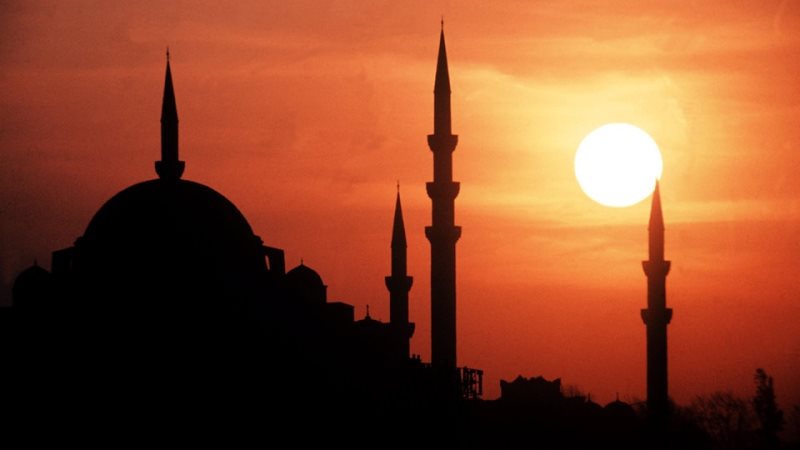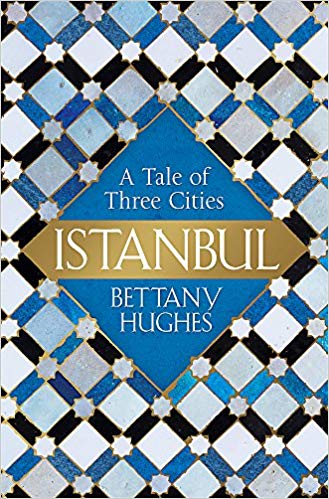Cementing the Orientalist legacy

Those who write the history of a city have it relatively easy: cities are full of buildings, squares and other remnants of the past that can be used to tell stories and bring history to life.
This is more true of Istanbul than it is of almost any other city in the world. In Istanbul, even the briefest of walks is enough to convince a visitor of just how long, rich and diverse the history of this city is. To the left a Byzantine Church, to the right a Roman viaduct, up ahead an Ottoman mosque, not to mention the city hall over there that dates from the time when the young Kemalist republic was striding into the modern age. All these structures bear witness to a past whose stories are just begging to be told.
But Istanbul has more than just a rich architectural heritage, it also boasts a riveting history that spans more than three millennia. British best-selling author Bettany Hughes had the ambitious idea of producing a new historical overview of the city on the Bosphorus – the result is her book "Istanbul: A Tale of Three Cities". Beautifully designed, well set and richly illustrated with maps and pictures, this attractive book features a huge amount of footnotes, a bibliography and an index, which all point to its serious pedigree.
Anecdotes and entertainment

Nevertheless, large swathes of the book prove a disappointment. The author undoubtedly has the insight needed to complete her ambitious project and her in-depth knowledge is impressive, yet she often serves up anecdotes instead of analysis and provides light entertainment instead of explanations.
She addresses many subjects without putting them into context, while touching on others without going into detail. For example, her description of the violent disbandment of the Janissaries in 1826, which heralded the start of the building of the modern Turkish state, leaves the reader with nothing more than the image of a huge massacre.
Indeed the book is full of chopped off heads, bodies impaled on stakes, rivers full of corpses and streets flowing red with human blood.
There has undoubtedly been much violence throughout the history of Istanbul, but in Hughes' book, large sections of this history come across as a succession of military campaigns, battles and executions. In great detail, she outlines the course of the crusades, the Battle of Lepanto, the siege of Vienna and the Crimean War.
Arguably it would have been sufficient for the history of the city to briefly outline these conflicts before focussing on their consequences for Istanbul.
Indeed the focus in this book is all too rarely on the city itself. In a book about Istanbul, it would have been nice to find out how its inhabitants lived and worked.
How did the city develop? How was it structured? How did people organise their co-existence?
However, it is only in a few chapters that the city becomes visible as an actual space filled with buildings, streets and squares, in which Hughes addresses its urban development, the way the urban area was structured, and the relationship between the different ethnic groups that peopled it. All too frequently, the city remains an abstract entity.
Historical battles and power struggles
It is, of course, true that a history book is not a travel guide and very few readers will be familiar with the streets and quarters of Istanbul. But even without a detailed knowledge of the city and its structures, it would be interesting to learn more about its genesis and the reasons why the Jews lived in Galata, the Armenians in Samatya and the Greeks in Fener. While Hughes does mention the Ottoman millet, which permitted all religious groups to live according to their own faith and their own culture and to run their own schools and courts, that is all she does, as with so many other things.
She is above all interested in the history of the rulers, wars, battles and power struggles. In other words, she has little interest in the lives of the ordinary people, everyday customs, the organisation of trade, and social, cultural and economic history. Every now and again there are interesting sections, for example on the role of women as commissioners of buildings or the dress codes of various ethnic groups, but then it is on to the next campaign.
It is particularly regrettable that Hughes completely leaves out the history of 20th-century Istanbul, a highly fascinating chapter in the city's past. After the declaration of the Republic, the population halved, before rising slowly again until the 1940s and then exploding in the 1980s. Within a generation, the population of Istanbul rocketed from 1.5 to 15 million. Those who were born in the 1940s can still remember the fields that lay directly outside the old city walls. Today, it takes 90 minutes on the motorway to get from the city walls to the outskirts of the city.[embed:render:embedded:node:27198]"Two handsome, well-bred cats"
Throughout the book, Hughes' language is consistently laid-back and full of colourful metaphors. However, as legitimate as it is to aim for a language rich in imagery, a sentence like "The Mughal and Ottoman emperors circled one another like handsome, well-bred cats" doesn't really add anything. Also her description of Istanbul in the latter years of the Ottoman Empire as a "gorgeous, abused, confused creature that seemed determined to meet the interest of the West with a heavy, secret smile" does not exactly provide much insight.
While Hughes' style is undoubtedly a matter of taste, her Western perspective is most infuriating. While constantly quoting British poets, diplomats and travellers, she rarely lets the people of Istanbul get a word in edgeways.
Lengthy chapters are devoted to eunuchs, harems and hammams – all things that have for centuries piqued the imagination of Europeans. While she does briefly criticise the Western fascination with Turkish baths and women's chambers, instead of then going on to smash sexually charged cliches, she proceeds to reproduce the old, dazzling images herself. A missed opportunity.
Ulrich von Schwerin
© Qantara.de 2019
Translated from the German by Aingeal Flanagan
